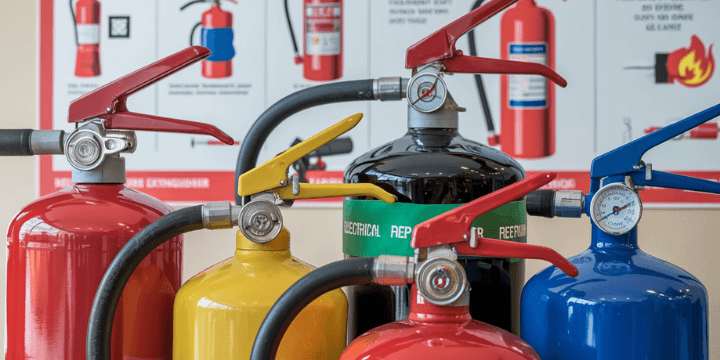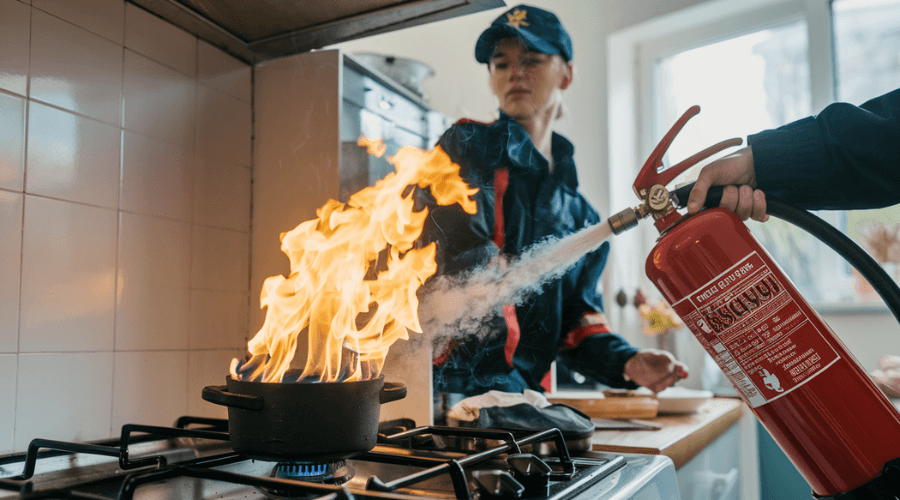If the firefighters determine a greater fire hazard than what the exhibits reflect, Fire extinguishing methods would thus have a service-or-damage turned-around perspective in an incidence of fire. Once fires cause deaths and damage to properties, the fog of inconvenience moves to emphasize awareness of fire safety as an essential element in protecting human lives everywhere homes, work, and communities.
All this and much more is encompassed in the best fire extinguishing methods for equipping anybody with the proper knowledge to face emergencies. That is by understanding the right techniques of fire extinction since it may determine whether an event turns out to be a small success or a serious mishap.
In the United States, fires take lives and property annually, and therefore, fire safety is an important topic for homes, workplaces, and public places. In this guide, you will learn the five best fire extinguishing methods and essential fire safety tips so that you are ready to combat fire incidents adequately.

Fire Extinguishing Methods You Should Know
Fire extinguishing Methods differ according to the classes of fire as well as the setting where the fire is found. Broadly categorized into five types, these methods address the most common fire scenarios:
- Water-Based Methods:
- Suitable for Class A fires which include wood, paper, and loth among others. They work with the principle of cooling the fire and taking heat away.
- Foam Extinguishers:
- They are for Class B fires involving flammable liquids. Plastic softens the burn area and stops the fire from getting fresh air to continue burning.
- CO2 Fire Extinguishers:
- These simple inhibitors will take the fire out instantly by shutting off the oxygen supply to Class B fires and electrical fires.
- Powder-Based Extinguishers:
- They work by starving the fire of fuels while also halting the chemical chain reaction, making them effective for use on Class A, B, and C fire classes.
- Specialized Methods:
- These are wet chemicals for use in cooking fire and halon replacements for sensitive electronics.
Water vs. Foam: Which One Reigns Supreme for Fires?
Water and foam extinguishers offer households and workplaces full protection. Together with fire extinguisher training, it assures that you are prepared enough to tackle fires effectively and safely.
The choice between foam and water largely depends on the context in which the fire occurs. Both methods are effective, but they offer different benefits and disadvantages depending on the nature of the fire. When comparing water and foam extinguishing methods, it’s essential to understand their strengths and limitations:
Water
Water extinguishers are successfully used on Class A fires involving wood, paper, or cloth. By cooling the heat source of the fire, these extinguishers stop the combustion process. The limitation becomes visible during Class B fires when flammable liquids catch fire, and during electrical fires, when water might present additional risks.
- Best for Class A fires.
- Small and cheap and commonly found in popular culture.
- Can be used to a very low extent for the fire that is related to flammable liquids and electric wires.
Foam
Foam extinguishers, therefore, are the most flexible as they can also be used on Class A fires in addition to Class B. They smother the flames while forming an aqueous film that can prevent re-flash. Foam is relatively more expensive than water and liquid fire suppression capacities make it better suited than water in such environments.

Choosing the Right Fire Extinguisher for Your Space
Water extinguishers cool flames and are ideal for Class A fires. They can even smother Class A or Class B fires with foam extinguishers. While combining both would assure maximum protection against fires, adequately training all personnel on how to use a fire extinguisher is valuable should an emergency require their use.
- Home:
- ABC extinguishing agents can effectively tackle the most common causes of fires in homes.
- Office:
- CO2 fire extinguishers should be used to combat electrical fires so make sure to fund this equipment.
- Garage/Workshop:
- Foam is equally effective on flammable liquids Only, foam extinguisher is good for flammable liquids.
- Kitchen:
- Absorbent powder though effective can be used on lesser classes of fire and therefore wet chemical extinguishers come in handy for grease and oil fires.
How Fire Extinguishing Methods Really Work
An understanding of the science of all fire extinguishing methods is very important. Water extinguishers cool flames and dissipate the heat. Foam extinguishers snuff out oxygen and hence prevent reignition. CO2 extinguishers displace oxygen and do this without leaving residue. Any individual trained in the use of fire extinguishers can be confident in fighting a fire in an emergency.
- Water-Based Fire Extinguishing:
- Cools the surface area thus the heat, bringing it to below the required level for fire ignition.
- Foam-Based Fire Extinguishing:
- Acts as a divider preventing the supply of oxygen to the flames and dulling the fire.
- CO2 Fire Extinguishers:
- Extinguish combustion, prevent re-ignition, and remove and replace the consumed oxygen in the adjoining area.
- Dry Powder Fire Extinguishing:
- Breaks the fire chemical reaction and is effective with various classes of fire.
- Wet Chemicals Fire Extinguishing:
- Quench flames from cooking oils by using a soap line barrier.
The Future of Fire-Extinguishing Methods
Technological advancements in fire extinguishing involve the integration of efficient fire extinguishing techniques for ecological consideration. Some exciting developments include:
- Eco-Friendly Agents:
- They are trying to make agents that are biodegradable and non-toxic so that the environment of the fire will not be harmed.
- Smart Fire Suppression Systems:
- Smart devices put out fires because they are embedded with IoT technology.
- Aerosol-Based Solutions:
- These systems are portable and can be crowded and are being accepted for their ability to fit in small places.
- Wildfire Mitigation:
- Better drones and fire retardant spray coatings are a positive signal toward the prevention and control of fire outbreaks.
FAQs
What are the most effective fire-extinguishing methods?
There are different approaches regarding fire extinguishing and the efficiency of each will depend on the type of fire being fought. ABC extinguishers can be used on most types of fires, but multi-purpose extinguishers are recommended for most cases, and electrical or grease fire extinguishers, for example, are more appropriate in specific circumstances.
How do CO2 fire extinguishers work?
It works with the help of a lack of oxygen. Its usefulness is in electrical fires and Class B fires and does not cause any ash, which is useful, especially in protecting sensitive equipment.
Are there eco-friendly fire extinguishing methods?
Fire extinguishing is not an exception since we now have biodegradable and non-toxic agents in our list of developments. These alternatives are intended to provide at least comparable benefit while causing least harm to the environment as possible.
Can fire extinguishing methods help prevent wildfires?
Extinguishing methods are useful to contain wildfires but prevention is more of a concept that barges from controlled burns, fire breaks, and enlightening the public. Others are technologies such as drones and fire retardant sprays as well among other things.
How do I maintain my fire extinguisher properly?
- Monthly checks include examination of pressure and damage to extinguishers.
- Storage must also be appropriate and preferably in easily visible areas.
- They should arrange professional services with their bank annually.
- Used or damaged extinguishers and horns should be replaced or recharged.
Other key practices are expressing readiness for maintenance next to properties and having fire extinguisher practices.
Also Read: How to Know When You Need Fire Extinguisher Replacement
